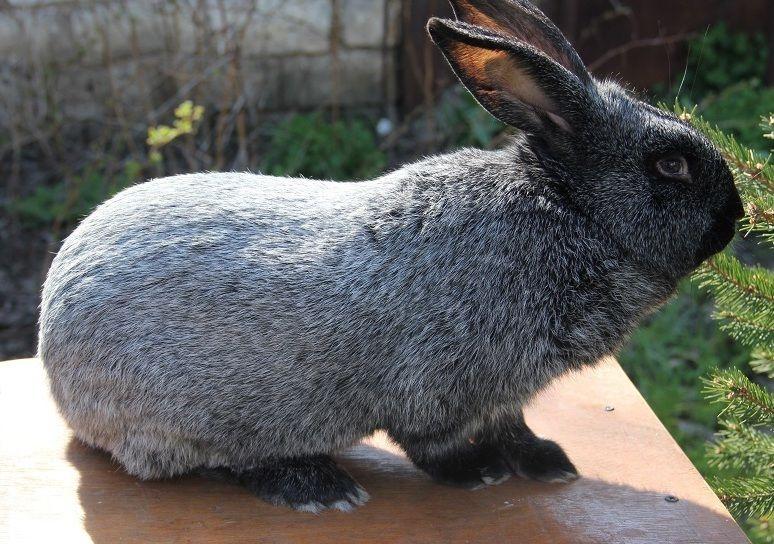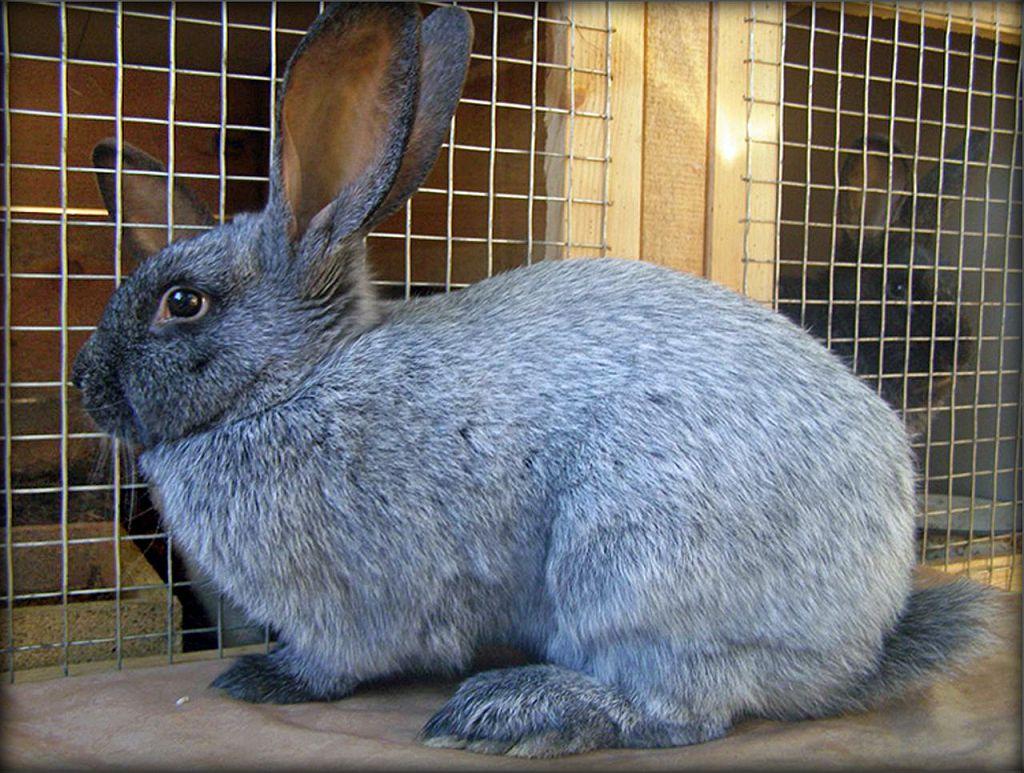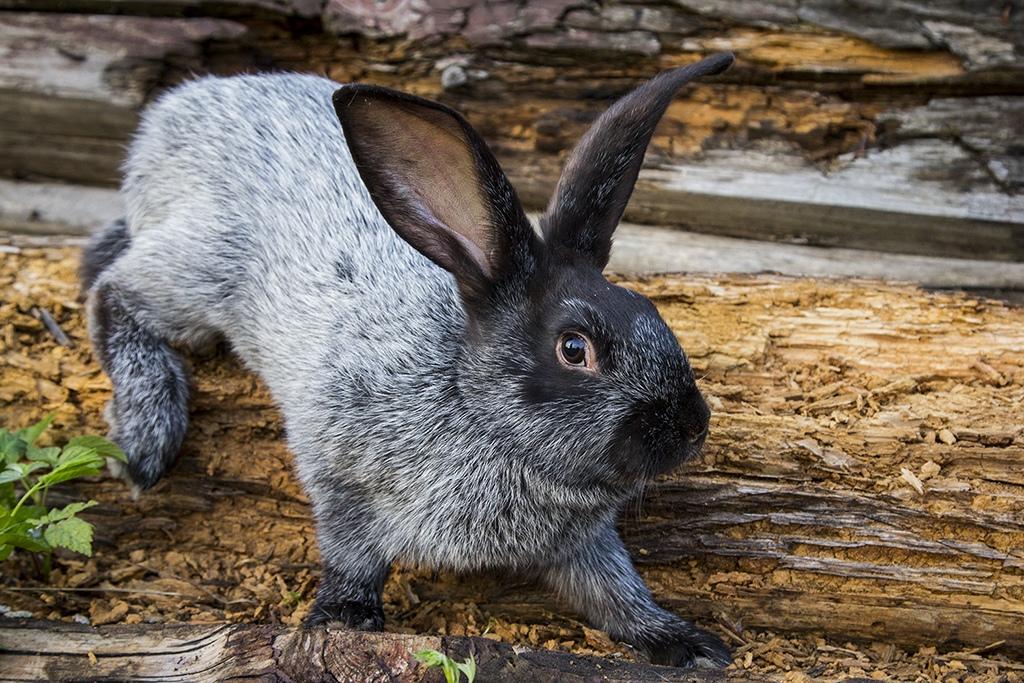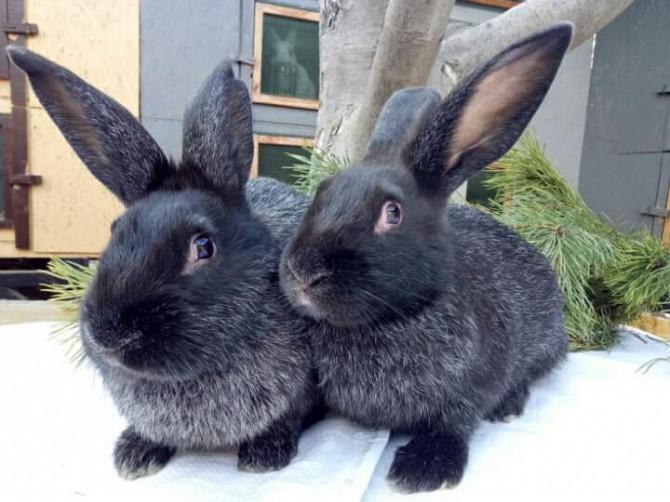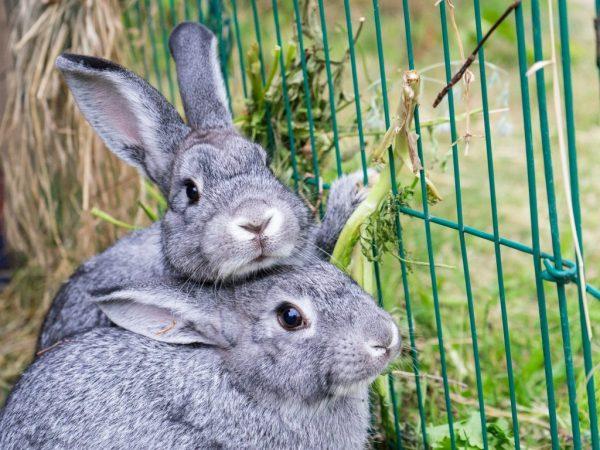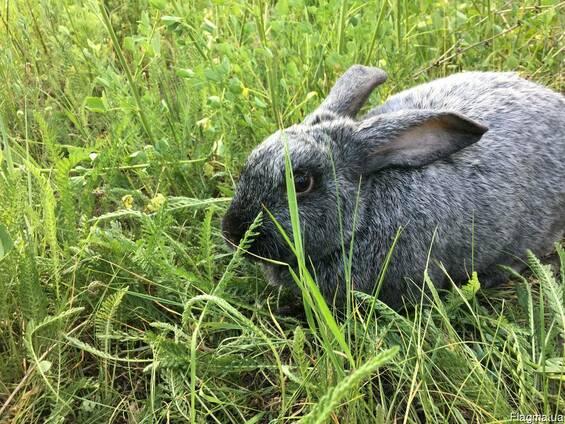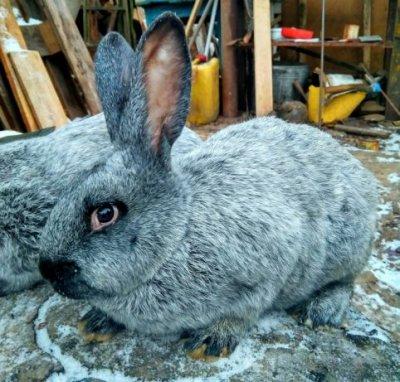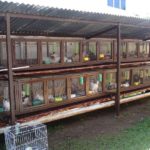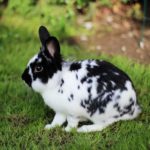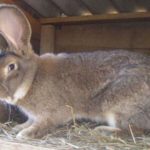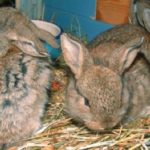Rabbit breeders value the breed called Poltava Silver for the thickness of its fur and the taste of its meat. The breed exhibits high levels of frost resistance and tolerates sub-zero temperatures without loss. The peculiarity of this species is the presence of silver-colored fur. Poltava silver rabbits were the result of selective selection and took a leading position among other breeds.
Origin of the breed
Poltava Silver is a breed that appeared in the second half of the 20th century after the work of Soviet breeders. The ancestors of the breed were 2 types of animals:
- Champagne Silver is a breed bred in France. The breed got its name from the province where individuals with silver fur were bred, Champagne. The disadvantage of this breed was the small size of males and females, as well as its inability to withstand frost.
- Poltava rabbits from Ukraine did not have a beautiful silver color, but showed frost resistance.
Since 1952, the breed has been officially registered in the Register. It is still in demand among private breeders or small farms.
Description and characteristics of silver rabbits
A distinctive feature of the breed is the color of its fur. It has a silvery tint. Fur belongs to the rollback category. This is a type of fur that has quality characteristics. The fur is thick and elastic, so a rabbit's coat always looks neat.
Breed characteristics:
- the weight of one rabbit reaches 7 kilograms, but is usually 5-6 kilograms;
- proportionate build, strong bones;
- body length is 55 centimeters;
- one litter brings up to 9 individuals;
- claw color – brown;
- ears stand straight, proportional to the body, not too long;
- meat yield is about 60%.
Interesting! Rabbits are born with black fur. It becomes silver after 4 months of the animal's life.
Main pros and cons
The breed is in demand. The main advantage of Poltava silver rabbits is the quality of their skins. On the market, silver skins are valued much more expensive than skins of other breeds.
| pros | Minuses |
| Frost-resistant, behave well in outdoor cages | It is necessary to control the composition of the diet |
| High quality fur | |
| Great taste of dietary meat | |
| High fertility rate | |
| Unpretentiousness in food | |
| Individuals reach sexual maturity at 4 months of age. |
Reference! Silver Poltava rabbits are very balanced and do not show aggression towards each other.
Breed varieties
There are variations of silver coins. Poltava silver is called Soviet silver. The remaining varieties differ in fur type and some physical characteristics:
- European silver or large light silver. A breed created on the basis of a breed from the Champagne region. The fur tone of the individuals is light, watery, and inelastic.
- Hungarian blues. Unlike HSS, Hungarian rabbits bred in Austria are dark. The silvery fur is noticeable on the back.
Reference! The BSS breed is very popular in Europe.
How to properly keep and care for animals
After purchasing young stock, it should be taken into account that rabbits quickly reach sexual maturity. This means that after acquisition, the animals must be kept in different cages and the behavior of the females must be monitored.
To raise healthy animals, it is necessary to comply with basic maintenance requirements. Cages for animals should be high, that is, rise above ground level at a height of 80 centimeters to 1 meter. The cages are made of wood or plywood and equipped with bars.
Content requirements:
- Due to the structure of the respiratory system, rabbits require constant ventilation.
- Rabbits need natural sunlight.
- A layer of straw 7 to 10 centimeters thick is laid at the bottom of the cage.
- The feeder and drinking bowl are placed inside the cage so that the animal has free access to food and drink.
Rabbit diet
Special attention is paid to the nutrition of rabbits.Despite the fact that the Poltava Silver breed is unpretentious in food, individuals need to receive a varied diet rich in vitamins. 75% of the diet is hay. Rabbits eat burdock, nettles, clover, and thistle. Young branches of fruit and berry trees are suitable for food. Rabbits need branches in order to sharpen teeth.
Leafy green vegetables are added to the diet seasonally. The daily norm for leafy greens is 200 grams. Rabbits digest cabbage leaves, beet tops, carrots and salad mix well.
Summer menu:
- hay – 200 grams;
- meadow grass – up to 700 grams;
- vegetables – 150 grams;
- solid food – 200 grams;
- concentrates – up to 200 grams.
Vitamin complexes are prescribed to rabbits as needed when they are diagnosed with diseases.
Attention! Do not give rabbits potatoes, parsley or mustard.
Breeding rules
Poltava Silver is a breed that reaches sexual maturity by 4-4.5 months. Features of the breeding process:
- The male must be older than the females. Breeders recommend choosing a male older than 6 months.
- For 10 females, one male is selected.
- The male is not carried to the female.
Rules that allow you to get healthy offspring:
- Individuals of the same breed are paired. Offspring is considered breeding when the blood of one breed does not mix with the blood of other breeds for 4 generations.
- Animals should not be mated if there are signs of diarrhea or other illnesses.
- Mating is prohibited at air temperatures above +22 degrees. During this period, males become sterile.
When selecting males and females for mating, they are guided by different characteristics. Well-fed individuals are selected from two litters.Mating of one female with a male is usually repeated 2 times: first, the female is placed with the male for the first mating, then after 5 days they are brought for the second mating. If the female is already pregnant at this point, she will refuse mating.
The rabbit's pregnancy lasts from 28 to 32 days. During this period, she needs additional nutrition and vitamins added to her diet. 3 or 5 days before giving birth, the female begins to build a nest for the offspring. She makes a rookery out of straw up to 6 centimeters high.
Diseases and prevention from them
The most common diseases of the species are infectious diseases. In second place, according to statistics, are invasive diseases.
- Coccidiosis. This is a disease caused by the coccidia parasite. This disease kills up to 70% of animals. Coccidiosis has 2 forms: hepatic and intestinal. The hepatic form lasts up to 50 days; with the intestinal form, the rabbit dies in 10 days.
- Cysticercosis. The cestode larva infects the liver. If treatment measures are not taken, peritonitis begins. There is no cure for this disease.
- Pasteurellosis. It affects livestock; carriers of the disease can be birds or rodents.
- Myxomatosis. A dangerous disease characterized by the formation of tumors on the body of an animal. There is no treatment, the sick rabbit is eliminated, and the livestock is quarantined.
- Tularemia. The disease is transmitted by small rodents. Rabbits get tularemia if basic sanitary standards are not followed.
- Listeriosis. Pregnant rabbits are susceptible to the disease. Listeriosis is acute and affects livestock along a chain. There is no cure for listeriosis.
- Pododermatitis.This is a disease that is characterized by the formation of wounds on the pads of the paws. Open wounds become infected. The cause of pododermatitis is being kept in unsanitary conditions.
- Gastrointestinal disorders. Domestic rabbits are susceptible to digestive tract disorders. Animals react to dietary errors with constipation or diarrhea. The disorder can be caused by the separation of young animals from their mother and the transition to solid food.
Prevention of diseases is regular vaccination. Vaccinations begin at 1.5 months of age. After 6 months, revaccination is done.
In addition to vaccination, breeders recommend holding special events and adhering to the rules.
| Prevention measures | Features of the event |
| Regular cleaning and disinfection | Cages, drinking bowls and feeders are washed weekly. If the rabbit is sick, the cage and surfaces are completely disinfected. |
| Quarantine | Young animals purchased from other breeders live in quarantine for 3 weeks. Those individuals who have been in contact with a sick animal are also quarantined. |
| Regular checkups | A quick inspection is carried out daily, and the animals are examined thoroughly weekly. |
Information! It is necessary to comply with the timing of vaccination and monitor the quality of the vaccine.
How to choose the right silversmith
Poltava silver is a breed that is common in Russia. Breeders advise purchasing animals from trusted farms that specialize in breeding this breed. The fur of a young rabbit is thick and dense. If there are scratches or bald patches on the skin, it is true that the animal is unhealthy.
When examining silvers, it is recommended to pay attention to eye color. The eyes of pedigree animals are brown in color.If the animal's eyes have a different shade, then it is a mixture of breeds. Silvers are happy to make contact with people; they are calm and balanced. The young do not bite or show aggression. Breeders recommend choosing individuals at the age of 3 or 4 months.

